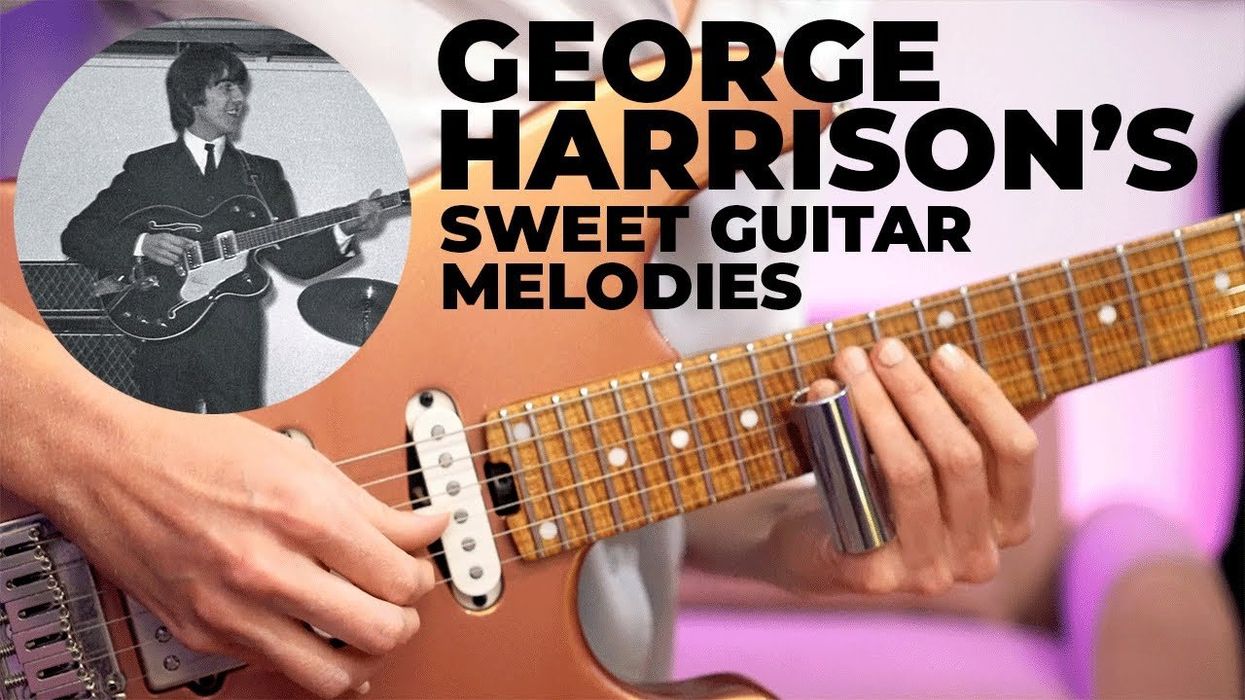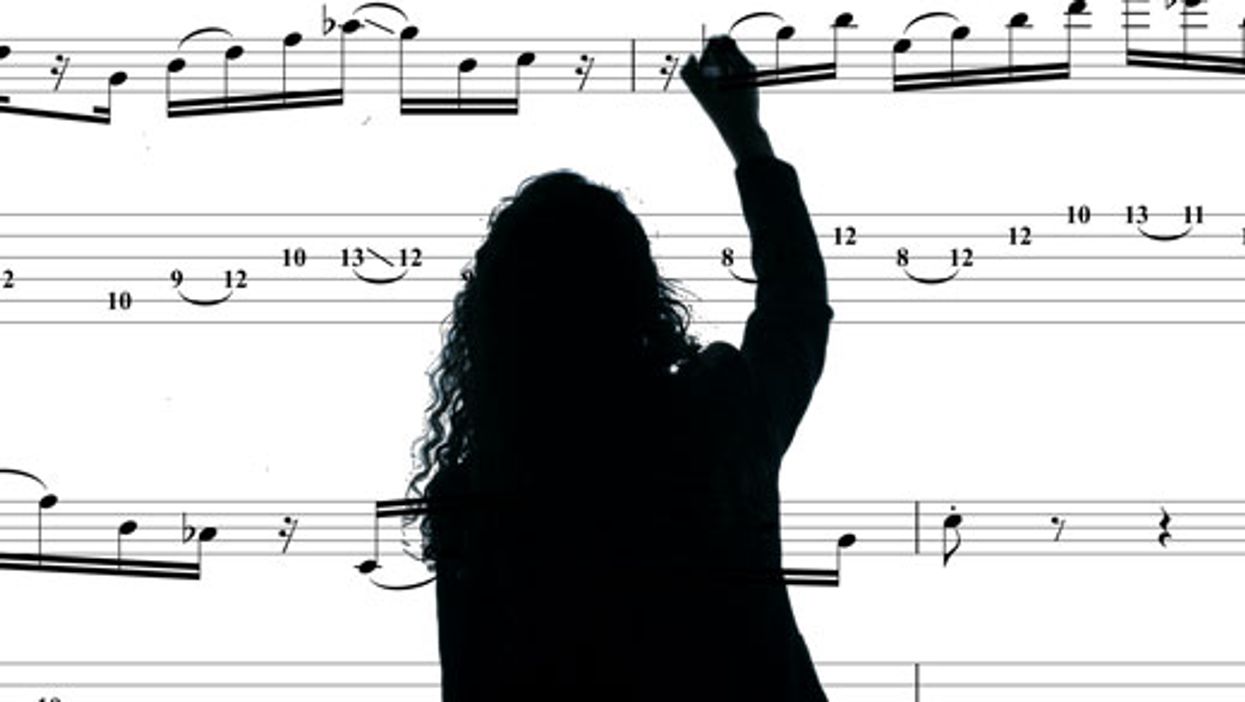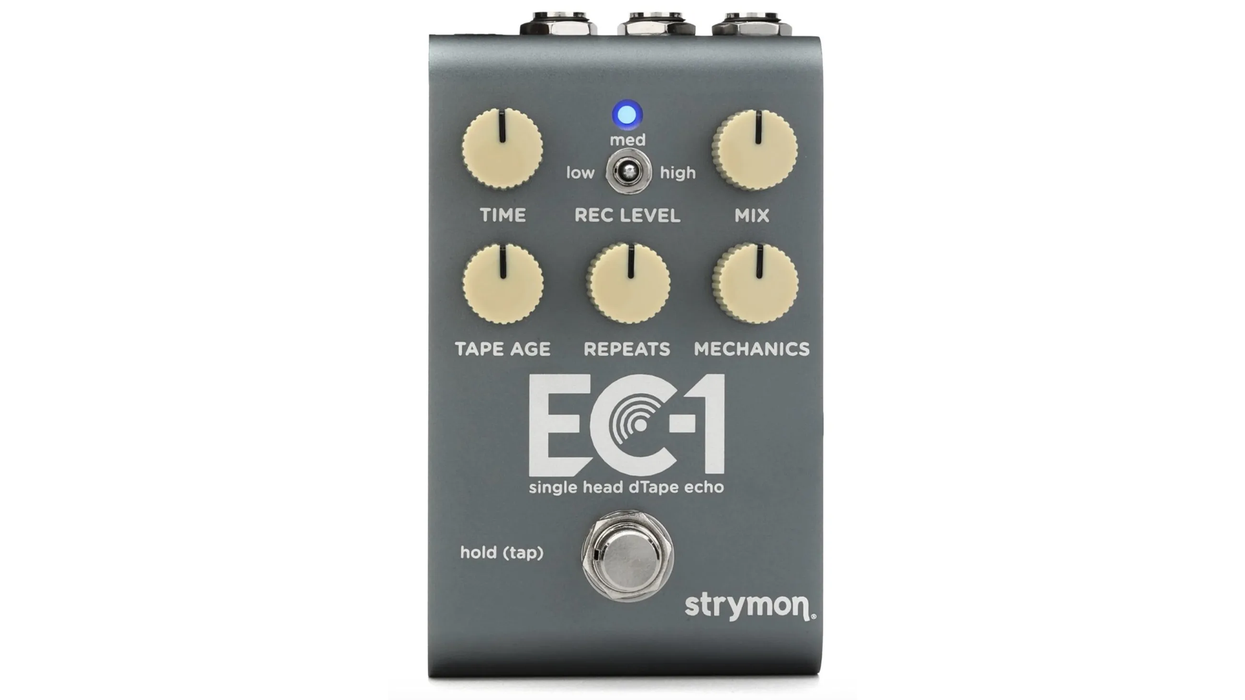Chops: Intermediate
Theory: Intermediate
Lesson Overview:
• Improve your bending accuracy.
• Develop a better sense of intervals.
• Create pedal steel-inspired licks in the style of Brent Mason and Johnny Hiland.
Click here to download a printable PDF of this lesson's notation.
The beauty of country music is that it features such diverse instrumentation. I’ve played rock and metal for many years, and have been totally obsessed with guitars and technique. But when I switch over to country-land, my guitar playing draws more influences from other instrumentalists I meet. I’m more likely to sit down and pick the brain of a pianist or a fiddle player than worry about how fast I can sweep pick. And when it comes to sounding unique, it’s hard to top the pedal steel.
With its roots in traditional lap-style Hawaiian guitar playing, the lap steel sound was hugely popular in the United States in the 1920s. The limitations of this instrument are evident to anyone who has played slide guitar in an open tuning—you’re hemmed in by the tonality of your tuning. If you’re tuned to a G6 chord, for example, it’s frustratingly difficult to play a Gm7. It occurred to some clever minds that with the inclusion of mechanical foot levers it would be possible to change the pitch of the strings as you play. Over the years this was expanded upon to the point where modern pedal steels might have two 10-string necks, eight pedals, and four knee levers! This results in a mind-boggling number of possible setups. In steel parlance, a setup is called a copedent.
I’d say it’s absolutely essential to go and listen to some Buddy Emmons at this point. The best place to start would be Danny Gatton’s Redneck Jazz Explosion album, although Emmons also has a variety of amazing solo albums. For a quick taste, watch this video of Emmons playing Ray Price’s “Night Life,” a country standard cowritten by Willie Nelson.
YouTube It
Introduced in 1967, the Parsons/White B-Bender offered a way to bend a string on the guitar using a mechanical pulley that’s activated by a lever attached to the top strap button. Over the years many great engineers have come up with systems to allow this, from the clever design of Joe Glaser to the Hipshot retrofit designs made famous by players like Will Ray. This has been used to great effect by some amazing guitar players over the years, but it’s still only half of what’s possible on a pedal steel. I (perhaps foolishly) recently purchased a pedal steel and even at the absolute beginner stage I’m already able to send multiple strings in different directions—something we guitarists just can’t do, but some have come close. In the early eighties Phil Baugh was using a pedal-based system and that tradition continues today. Just check out the video below for a more modern take on this technology.
YouTube It
The best way to understand pedal steel and grab some new ideas is to develop a fundamental understanding of chords and intervals. In Ex. 1 I play four chord forms and then strive to reproduce the same basic sound while bending into one of the notes. The first shape is a simple A major triad and I follow it with a bend from the 2 to the 3. Next, I play another A major triad and move the b7 to the root. The key here really is intervals: I’m always aware of where I’m starting and where I’m bending to, and I ask myself, “How does this fit around the underlying chord?”
Click here for Ex. 1
Ex. 2 begins in 10th position and the first bend moves the B up to C#. The second measure repeats this bend, but adds a bit more flash. Once you pluck the bend on beat one, hold it while you attack the E on the 1st string (try picking with your middle finger), hit the bent note again, move down to D on the 1st string, and finally strike and release the bend.
So far this is standard Southern rock vocabulary, but at this point there’s a little twist as we slide down to the b7 on the 2nd string, then bend up with the index finger to the root while sounding the C# on the 1st string. These are all great notes to play over an A7 chord.
Click here for Ex. 2
Ex. 3 expands on the same basic idea from the second measure of Ex. 2. We move it up the neck through some of the shapes in Ex. 1 and finally transfer it to another string set in the final measure. There’s a lot of pushing, pulling, and moving in this lick, so work through it slowly to keep those bends in tune. Also, make sure to ask yourself if each bend makes sense ... and if so, why?
Click here for Ex. 3
We slip into Brent Mason territory with Ex. 4. It starts with a wicked double-stop lick that moves into the open position before a fiddly bend up to C#—which sounds great against the open 1st string. It’s certainly a difficult one to get up to speed. Good luck.
Click here for Ex. 4
Ex. 5 is a Johnny Hiland-inspired double-stop idea that ends with a great (but tough) bend. We’re holding down the lower part of an A major triad while bending up to C# to complete the sound.
Click here for Ex. 5
The opening bend in Ex. 6 should be pretty familiar by now. Simply bend up to C# and alternate that with E and D on the 2nd string. This leads right up to a sliding, double-stop lick that moves through the inversions before ending on a bend very similar to the second bend in Ex. 1.
Click here for Ex. 6
This last lick (Ex. 7) is one I’ve been sitting on for a while. It was inspired by the legendary Ted Greene and throws some harmonics into the mix. Basically, we’re playing fairly simple three-note shapes, but the lowest note will be played as an artificial harmonic. It’s certainly not something I’m using a lot, but it’s ripe for development.
Click here for Ex. 7
I hope you’ve enjoyed exploring steel-like sounds and they spur you to check out some more steel players. There’s really a wealth of information to be gained from this unique and under-appreciated instrument. From Speedy West to Paul Franklin and Randle Currie, they’re so much incredible music out there to be enjoyed!



















